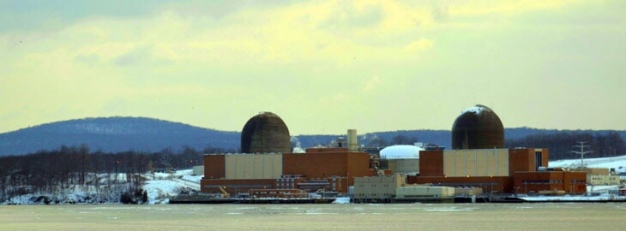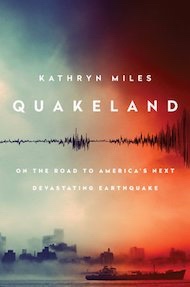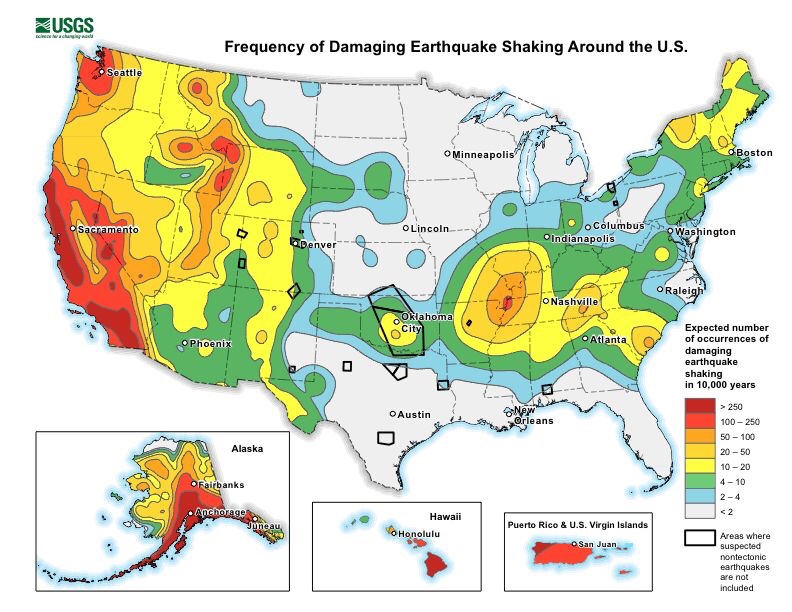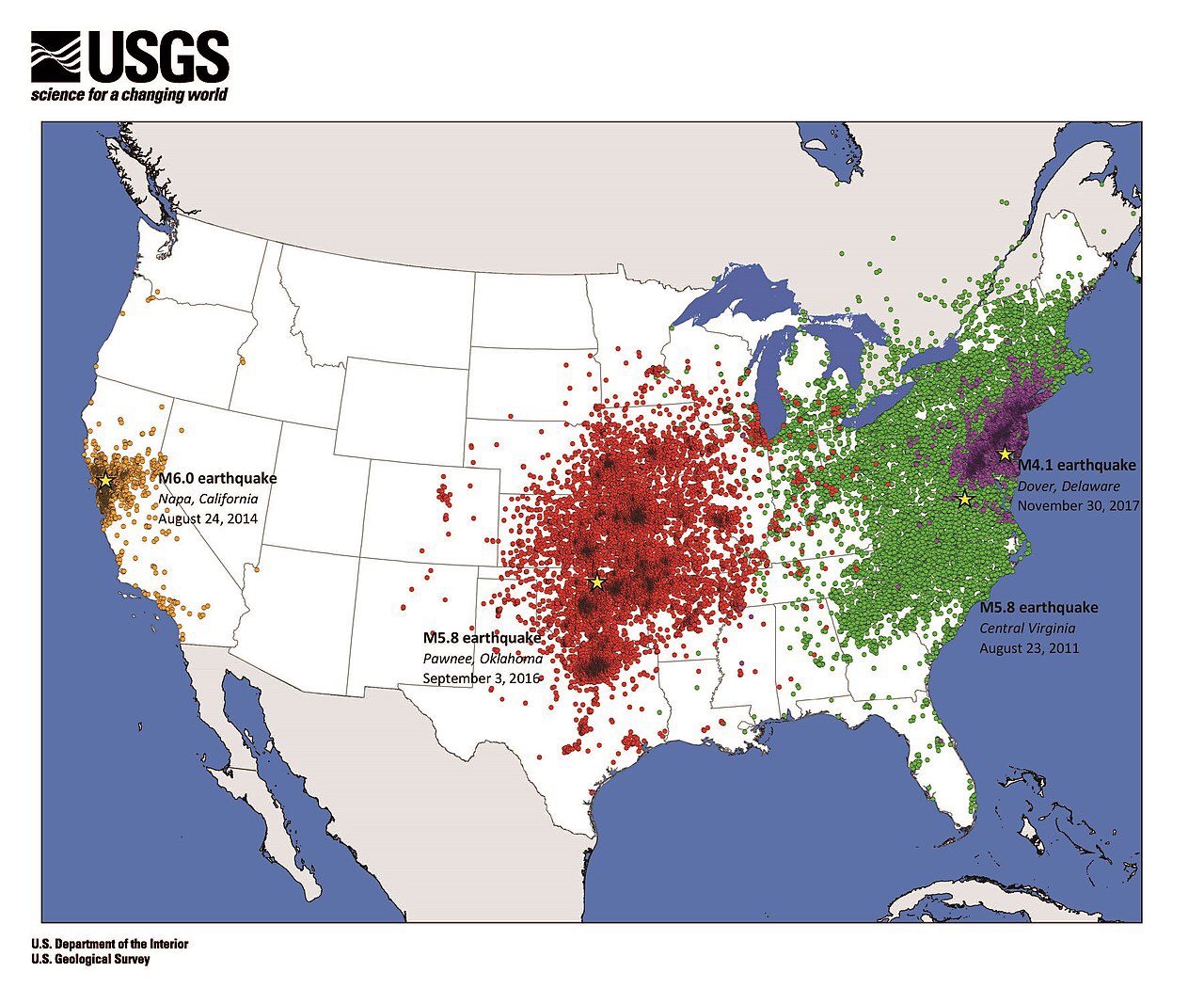The prophecy is more than seeing into the future. For the prophecy sees without the element of time. For the prophecy sees things as they were, as they are, and as they always shall be.
Wednesday, August 31, 2022
A Closer Look At The Sixth Seal (Revelation 6:12)
Tuesday, August 30, 2022
A Lack Of Vigilance Before The Sixth Seal (Revelation 6:12)
 Faults Underlying Exercise Vigilant Guard
Faults Underlying Exercise Vigilant Guard
Dated: Thu, Nov 5, 2009
This map illustrates the earthquake fault lines in Western New York. An earthquake in the region is a likely event, says University of Buffalo Professor Dr. Robert Jacobi.
TONAWANDA, NY — An earthquake in western New York, the scenario that Exercise Vigilant Guard is built around, is not that far-fetched, according to University of Buffalo geology professor Dr. Robert Jacobi.
When asked about earthquakes in the area, Jacobi pulls out a computer-generated state map, cross-hatched with diagonal lines representing geological faults.
The faults show that past earthquakes in the state were not random, and could occur again on the same fault systems, he said.
“In western New York, 6.5 magnitude earthquakes are possible,” he said.
This possibility underlies Exercise Vigilant Guard, a joint training opportunity for National Guard and emergency response organizations to build relationships with local, state, regional and federal partners against a variety of different homeland security threats including natural disasters and potential terrorist attacks.
The exercise was based on an earthquake scenario, and a rubble pile at the Spaulding Fibre site here was used to simulate a collapsed building. The scenario was chosen as a result of extensive consultations with the earthquake experts at the University of Buffalo’s Multidisciplinary Center for Earthquake Engineering Research (MCEER), said Brig. Gen. Mike Swezey, commander of 53rd Troop Command, who visited the site on Monday.
Earthquakes of up to 7 magnitude have occurred in the Northeastern part of the continent, and this scenario was calibrated on the magnitude 5.9 earthquake which occurred in Saguenay, Quebec in 1988, said Jacobi and Professor Andre Filiatrault, MCEER director.
“A 5.9 magnitude earthquake in this area is not an unrealistic scenario,” said Filiatrault.
Closer to home, a 1.9 magnitude earthquake occurred about 2.5 miles from the Spaulding Fibre site within the last decade, Jacobi said. He and other earthquake experts impaneled by the Atomic Energy Control Board of Canada in 1997 found that there’s a 40 percent chance of 6.5 magnitude earthquake occurring along the Clareden-Linden fault system, which lies about halfway between Buffalo and Rochester, Jacobi added.
Jacobi and Filiatrault said the soft soil of western New York, especially in part of downtown Buffalo, would amplify tremors, causing more damage.
“It’s like jello in a bowl,” said Jacobi.
The area’s old infrastructure is vulnerable because it was built without reinforcing steel, said Filiatrault. Damage to industrial areas could release hazardous materials, he added.
“You’ll have significant damage,” Filiatrault said.
Exercise Vigilant Guard involved an earthquake’s aftermath, including infrastructure damage, injuries, deaths, displaced citizens and hazardous material incidents. All this week, more than 1,300 National Guard troops and hundreds of local and regional emergency response professionals have been training at several sites in western New York to respond these types of incidents.
Jacobi called Exercise Vigilant Guard “important and illuminating.”
“I’m proud of the National Guard for organizing and carrying out such an excellent exercise,” he said.
Training concluded Thursday.
Monday, August 29, 2022
Indian Point’s Final Days Before the Sixth Seal (Revelation 6:12)

Sunday, August 28, 2022
A Closer Look At The Sixth Seal (Revelation 6:12)
Saturday, August 27, 2022
Evidence Shows Power of the Sixth Seal (Revelation 6:12)
New Evidence Shows Power of East Coast Earthquakes
Virginia Earthquake Triggered Landslides at Great Distances
Friday, August 26, 2022
More Shaking Before the Sixth Seal: Revelation 6

For the 21st time this week, earthquakes hit the Columbia by I area
By Noah FeitUpdated July 03, 2022 12:16 PM
Two more earthquakes were confirmed in the Columbia area early Sunday morning as seismic activity continued following a recent series of relatively powerful earthquakes.
Sunday’s 1.9 and 1.6 magnitude earthquakeswere the 20th and 21st to hit the Midlands in the past week, according to the South Carolina Department of Natural Resources Geological Survey.
The first earthquake, recorded at a depth of 2.1 kilometers, or about 1.3 miles, was reported within 3 miles of Elgin at 12:16 a.m., the South Carolina Emergency Management Division said. The second hit about 2 miles beneath the surface in the area closer to Lugoff at 6:29 a.m., according to the U.S. Geological Survey.
“In case you were wondering if it was fireworks or earthquakes earlier this morning …” SCEMD said on Facebook.
While it would normally be no competition between the amount of vibrations caused by fireworks on a Fourth of July holiday weekend in South Carolina and the shaking felt from an earthquake’s tremors, the question is legitimate this year because of all the recent seismic activity.
Last Sunday, an earthquake was recorded in Elgin, according to the USGS. That led a series of earthquakes, or aftershocks, including a pair of 3.5 magnitude and 3.6 magnitude quakes on Wednesday afternoon and early evening.
Those were the two largest quakes to hit South Carolina in nearly a decade. A 4.1-magnitude quake struck McCormick County in 2014.
Another earthquake in Georgia on June 18 reached a 3.9 magnitude and could be felt in much of South Carolina.
The recent earthquakes mean at least 50 have been detected in the Palmetto State since the start of 2022, according to South Carolina DNR. All but five of the quakes have been in the Midlands.
In all, 52 earthquakes have hit the Columbia area since a 3.3 magnitude quake was recorded on Dec. 27, 2021, according to the South Carolina Department of Natural Resources.
No major damage or injuries have been reported from any of the recent quakes.
Earthquakes that register 2.5 magnitude or less often go unnoticed and are usually only recorded by a seismograph, according to Michigan Technological University. Any quake less than 5.5 magnitude is not likely to cause significant damage, the school said.
It is typical for South Carolina to have between six and 10 earthquakes a year, the S.C. Geological Survey previously reported. There have been 77 earthquakes in South Carolina since Jan. 18, 2021, according to the S.C. Department of Natural Resources.
An explanation for the recent outburst has eluded scientists.
Digging and blasting at mines, water seeping through the ground from lakes, or other changes in weight or pressure underground could all contribute to seismic activity, The State previously reported, but no one has settled on the single cause for the Midlands’ shaking. The state Department of Health and Environmental Control said last week that mining activity is not likely to be the cause of recent earthquakes, as mines in the Elgin area are shallow.
Elgin, located about 20 miles northeast of Columbia and situated on a fault line, has been experiencing an unusual earthquake “swarm” for the past several months, leaving some residents feeling uneasy. The series of quakes might be the longest period of earthquake activity in the state’s history, officials said last week. But officials have said they don’t believe the spate of minor earthquakes is an indicator that a bigger quake could be on the way.
The strongest earthquake ever recorded in South Carolina — and on the East Coast of the U.S. — was a devastating 7.3 in Charleston in 1886.
That quake killed 60 people and was felt over 2.5 million square miles, from Cuba to New York, and Bermuda to the Mississippi River, according to the Emergency Management Division.
Reported earthquakes in SC in 2021-22
Date/Location
Magnitude
Depth (km)
Jan. 18/Dalzell
2.1
6.9
Feb. 13/Summerville
2.1
5.1
May 12/Heath Springs
1.8
9.99
May 31/Summit
2.6
1.7
May 31/Summit
2.05.1
July 16/Ladson2.04.0
July 22/Ladson1.3
3.5
July 22/Ladson
1.95
3.97
Aug. 21/Centerville
1.75
1.97
Aug. 21/Centerville
1.71
3.37
Sept. 27/Summerville2.86.0
Sept. 27/Summerville
2.0
5.8
Sept. 27/Centerville
3.36.8Oct. 25/Jenkinsville2.23.8Oct. 26/Jenkinsville1.80.0Oct. 28/Jenkinsville1.81.8Oct. 28/Jenkinsville1.70.0Oct. 28/Jenkinsville2.14.2Oct. 31/Jenkinsville2.30.1Nov. 1/Jenkinsville2.05.1Nov. 9/Centerville1.53.8Nov. 16/Arial2.25.4Dec. 20/Ladson1.12.8Dec. 27/Lugoff3.33.2Dec. 27/Lugoff2.52.4Dec. 27/Elgin2.10.7Dec. 27/Lugoff1.74.9Dec. 29/Elgin2.31.6Dec. 30/Elgin2.52.5Dec. 30/Elgin2.43.8Jan. 3/Lugoff2.52.7Jan. 5/Lugoff2.60.5Jan. 5/Lugoff1.57.0Jan. 9/Ladson1.42.9Jan. 11/Elgin1.75.4Jan. 11/Lugoff2.03.2Jan. 11/Elgin1.35.0Jan. 15/Elgin1.83.5Jan. 19/Elgin1.95.0Jan. 21/Elgin1.94.8
Jan. 27/Lugoff2.11.0Feb. 2/Elgin1.53.9March 4/Elgin1.82.8March 9/Elgin2.23.6March 11/Camden2.11.2March 27/Lugoff2.11.9March 28/Centerville0.92.9April 7/Elgin2.02.9April 8/Centerville1.63.6April 22/Ladson1.13.5April 22/Taylors2.22.3May 9/Elgin3.33.1May 9/Elgin1.62.9May 9/Elgin1.784.1May 9/Elgin2.13.7May 9/Elgin2.95.6May 10/Elgin2.33.9May 10/Elgin2.86.2May 19/Elgin1.82.5May 21/Elgin1.95.6June 26/Elgin1.884.09June 29/Elgin3.52.64June 29/Elgin1.882.92June 29/Elgin3.62.95June 29/Elgin1.792.07June 29/Elgin1.513.72June 29/Elgin1.461.93June 29/Elgin2.062.22June 30/Elgin2.323.09June 30/Elgin1.442.8June 30/Elgin2.033.11June 30/Elgin2.152.56June 30/Elgin2.061.92June 30/Elgin1.492.46July 1/Elgin1.553.37July 1/Elgin2.113.83July 1/Elgin1.263.3July 1/Elgin1.684.02July 2/Elgin2.091.65July 3/Elgin1.92.1July 3/Lugoff1.63.2
Thursday, August 25, 2022
THE SIXTH SEAL: NEW YORK CITY (REVELATION 6:12)
 Earthquake activity in the New York City area
Earthquake activity in the New York City area
Background
Earthquakes and geologically mapped faults in the Northeastern U.S.
The Ramapo fault and other New York City area faults
Wednesday, August 24, 2022
Quakeland: On the Road to America’s Next Devastating Earthquake: Revelation 6

Monday, August 22, 2022
Two Centuries Before The Sixth Seal (Revelation 6:12)

It happened before, and it could happen again.
By Hilary Sargent @lilsarg
Boston.com Staff | 11.19.15 | 5:53 AM
On November 18, 1755, Massachusetts experienced its largest recorded earthquake.
The earthquake occurred in the waters off Cape Ann, and was felt within seconds in Boston, and as far away as Nova Scotia, the Chesapeake Bay, and upstate New York, according to the U.S. Geological Survey.
Seismologists have since estimated the quake to have been between 6.0 and 6.3 on the Richter scale, according to the Massachusetts Historical Society.
While there were no fatalities, the damage was extensive.
According to the USGS, approximately 100 chimneys and roofs collapsed, and over a thousand were damaged.
The worst damage occurred north of Boston, but the city was not unscathed.
A 1755 report in The Philadelphia Gazette described the quake’s impact on Boston:
“There was at first a rumbling noise like low thunder, which was immediately followed with such a violent shaking of the earth and buildings, as threw every into the greatest amazement, expecting every moment to be buried in the ruins of their houses. In a word, the instances of damage done to our houses and chimnies are so many, that it would be endless to recount them.”
The quake sent the grasshopper weathervane atop Faneuil Hall tumbling to the ground, according to the Massachusetts Historical Society.
An account of the earthquake, published in The Pennsylvania Gazette on December 4, 1755.
The earthquake struck at 4:30 in the morning, and the shaking lasted “near four minutes,” according to an entry John Adams, then 20, wrote in his diary that day.
The brief diary entry described the damage he witnessed.
“I was then at my Fathers in Braintree, and awoke out of my sleep in the midst of it,” he wrote. “The house seemed to rock and reel and crack as if it would fall in ruins about us. 7 Chimnies were shatter’d by it within one mile of my Fathers house.”
The shaking was so intense that the crew of one ship off the Boston coast became convinced the vessel had run aground, and did not learn about the earthquake until they reached land, according to the Massachusetts Historical Society.
In 1832, a writer for the Hampshire (Northampton) Gazette wrote about one woman’s memories from the quake upon her death.
“It was between 4 and 5 in the morning, and the moon shone brightly. She and the rest of the family were suddenly awaked from sleep by a noise like that of the trampling of many horses; the house trembled and the pewter rattled on the shelves. They all sprang out of bed, and the affrightted children clung to their parents. “I cannot help you dear children,” said the good mother, “we must look to God for help.”
The Cape Ann earthquake came just 17 days after an earthquake estimated to have been 8.5-9.0 on the Richter scale struck in Lisbon, Portugal, killing at least 60,000 and causing untold damage.
There was no shortage of people sure they knew the impretus for the Cape Ann earthquake.
According to many ministers in and around Boston, “God’s wrath had brought this earthquake upon Boston,” according to the Massachusetts Historical Society.
In “Verses Occasioned by the Earthquakes in the Month of November, 1755,” Jeremiah Newland, a Taunton resident who was active in religious activities in the Colony, wrote that the earthquake was a reminder of the importance of obedience to God.
“It is becaufe we broke thy Laws,
that thou didst shake the Earth.
…
O what a Day the Scriptures say,
the EARTHQUAKE doth foretell;
O turn to God; lest by his Rod,
he cast thee down to Hell.”
Boston Pastor Jonathan Mayhew warned in a sermon that the 1755 earthquakes in Massachusetts and Portugal were “judgments of heaven, at least as intimations of God’s righteous displeasure, and warnings from him.”
There were some, though, who attempted to put forth a scientific explanation for the earthquake.
Well, sort of.
In a lecture delivered just a week after the earthquake, Harvard mathematics professor John Winthrop said the quake was the result of a reaction between “vapors” and “the heat within the bowels of the earth.” But even Winthrop made sure to state that his scientific theory “does not in the least detract from the majesty … of God.”
It has been 260 years since the Cape Ann earthquake. Some experts, including Boston College seismologist John Ebel, think New England could be due for another significant quake.
In a recent Boston Globe report, Ebel said the New England region “can expect a 4 to 5 magnitude quake every decade, a 5 to 6 every century, and a magnitude 6 or above every thousand years.”
If the Cape Ann earthquake occurred today, “the City of Boston could sustain billions of dollars of earthquake damage, with many thousands injured or killed,” according to a 1997 study by the US Army Corps of Engineers.
New York Subways at the Sixth Seal (Revelation 6)
 How vulnerable are NYC’s underwater subway tunnels to flooding?
How vulnerable are NYC’s underwater subway tunnels to flooding?
New York City is full of peculiar phenomena—rickety fire escapes; 100-year-old subway tunnels; air conditioners propped perilously into window frames—that can strike fear into the heart of even the toughest city denizen. But should they? Every month, writer Ashley Fetters will be exploring—and debunking—these New York-specific fears, letting you know what you should actually worry about, and what anxieties you can simply let slip away.
The 25-minute subway commute from Crown Heights to the Financial District on the 2/3 line is, in my experience, a surprisingly peaceful start to the workday—save for one 3,100-foot stretch between the Clark Street and Wall Street stations, where for three minutes I sit wondering what the probability is that I will soon die a torturous, claustrophobic drowning death right here in this subway car.
The Clark Street Tunnel, opened in 1916, is one of approximately a dozen tunnels that escort MTA passengers from one borough to the next underwater—and just about all of them, with the exception of the 1989 addition of the 63rd Street F train tunnel, were constructed between 1900 and 1936.
Each day, thousands of New Yorkers venture across the East River and back again through these tubes buried deep in the riverbed, some of which are nearing or even past their 100th birthdays. Are they wrong to ponder their own mortality while picturing one of these watery catacombs suddenly springing a leak?
Mostly yes, they are, says Michael Horodniceanu, the former president of MTA Capital Construction and current principal of Urban Advisory Group. First, it’s important to remember that the subway tunnel is built under the riverbed, not just in the river—so what immediately surrounds the tunnel isn’t water but some 25 feet of soil. “There’s a lot of dirt on top of it,” Horodniceanu says. “It’s well into the bed of the bottom of the channel.”
And second, as Angus Kress Gillespie, author of Crossing Under the Hudson: The Story of the Holland and Lincoln Tunnels, points out, New York’s underwater subway tunnels are designed to withstand some leaking. And withstand it they do: Pumps placed below the floor of the tunnel, he says, are always running, always diverting water seepage into the sewers. (Horodniceanu says the amount of water these pumps divert into the sewer system each day numbers in the thousands of gallons.)
Additionally, MTA crews routinely repair the grouting and caulking, and often inject a substance into the walls that creates a waterproof membrane outside the tunnel—which keeps water out of the tunnel and relieves any water pressure acting on its walls. New tunnels, Horodniceanu points out, are even built with an outside waterproofing membrane that works like an umbrella: Water goes around it, it falls to the sides, and then it gets channeled into a pumping station and pumped out.
Of course, the classic New York nightmare scenario isn’t just a cute little trickle finding its way in. The anxiety daydream usually involves something sinister, or seismic. The good news, however, is that while an earthquake or explosion would indeed be bad for many reasons, it likely wouldn’t result in the frantic flooding horror scene that plays out in some commuters’ imaginations.
The Montague Tube, which sustained severe damage during Hurricane Sandy.
MTA New York City Transit / Marc A. Hermann
Horodniceanu assures me that tunnels built more recently are “built to withstand a seismic event.” The older tunnels, however—like, um, the Clark Street Tunnel—“were not seismically retrofitted, let me put it that way,” Horodniceanu says. “But the way they were built is in such a way that I do not believe an earthquake would affect them.” They aren’t deep enough in the ground, anyway, he says, to be too intensely affected by a seismic event. (The MTA did not respond to a request for comment.)
One of the only real threats to tunnel infrastructure, Horodniceanu adds, is extreme weather. Hurricane Sandy, for example, caused flooding in the tunnels, which “created problems with the infrastructure.” He continues, “The tunnels have to be rebuilt as a result of saltwater corroding the infrastructure.”
Still, he points out, hurricanes don’t exactly happen with no warning. So while Hurricane Sandy did cause major trauma to the tunnels, train traffic could be stopped with ample time to keep passengers out of harm’s way. In 2012, Governor Andrew Cuomo directed all the MTA’s mass transit services to shut down at 7 p.m. the night before Hurricane Sandy was expected to hit New York City.
And Gillespie, for his part, doubts even an explosion would result in sudden, dangerous flooding. A subway tunnel is not a closed system, he points out; it’s like a pipe that’s open at both ends. “The force of a blast would go forwards and backwards out the exit,” he says.
So the subway-train version of that terrifying Holland Tunnel flood scene in Sylvester Stallone’s Daylight is … unrealistic, right?
“Yeah,” Gillespie laughs. “Yeah. It is.”
Got a weird New York anxiety that you want explored? E-mail tips@curbed.com, and we may include it in a future column.
Saturday, August 20, 2022
The Quakes Preceding the Sixth Seal: Revelation 6:12

East Coast Quakes: What to Know About the Tremors Below
By Meteorologist Dominic Ramunni Nationwide PUBLISHED 7:13 PM ET Aug. 11, 2020 PUBLISHED 7:13 PM EDT Aug. 11, 2020
People across the Carolinas and Mid-Atlantic were shaken, literally, on a Sunday morning as a magnitude 5.1 earthquake struck in North Carolina on August 9, 2020.
Centered in Sparta, NC, the tremor knocked groceries off shelves and left many wondering just when the next big one could strike.

Items lie on the floor of a grocery store after an earthquake on Sunday, August 9, 2020 in North Carolina.
Fault Lines
Compared to the West Coast, there are far fewer fault lines in the East. This is why earthquakes in the East are relatively uncommon and weaker in magnitude.
That said, earthquakes still occur in the East.
According to Spectrum News Meteorologist Matthew East, “Earthquakes have occurred in every eastern U.S. state, and a majority of states have recorded damaging earthquakes. However, they are pretty rare. For instance, the Sparta earthquake Sunday was the strongest in North Carolina in over 100 years.”

While nowhere near to the extent of the West Coast, damaging earthquakes can and do affect much of the eastern half of the country.
For example, across the Tennesse River Valley lies the New Madrid Fault Line. While much smaller in size than those found farther west, the fault has managed to produce several earthquakes over magnitude 7.0 in the last couple hundred years.
In 1886, an estimated magnitude 7.0 struck Charleston, South Carolina along a previously unknown seismic zone. Nearly the entire town had to be rebuilt.
Vulnerabilities
The eastern half of the U.S. has its own set of vulnerabilities from earthquakes.
Seismic waves actually travel farther in the East as opposed to the West Coast. This is because the rocks that make up the East are tens, if not hundreds, of millions of years older than in the West.
These older rocks have had much more time to bond together with other rocks under the tremendous pressure of Earth’s crust. This allows seismic energy to transfer between rocks more efficiently during an earthquake, causing the shaking to be felt much further.
This is why, during the latest quake in North Carolina, impacts were felt not just across the state, but reports of shaking came as far as Atlanta, Georgia, nearly 300 miles away.

Reports of shaking from different earthquakes of similar magnitude.
Quakes in the East can also be more damaging to infrastructure than in the West. This is generally due to the older buildings found east. Architects in the early-to-mid 1900s simply were not accounting for earthquakes in their designs for cities along the East Coast.
When a magnitude 5.8 earthquake struck Virginia in 2011, not only were numerous historical monuments in Washington, D.C. damaged, shaking was reported up and down the East Coast with tremors even reported in Canada.
Unpredictable
There is no way to accurately predict when or where an earthquake may strike.
Some quakes will have a smaller earthquake precede the primary one. This is called a foreshock.
The problem is though, it’s difficult to say whether the foreshock is in fact a foreshock and not the primary earthquake. Only time will tell the difference.
The United State Geological Survey (USGS) is experimenting with early warning detection systems in the West Coast.
While this system cannot predict earthquakes before they occur, they can provide warning up to tens of seconds in advance that shaking is imminent. This could provide just enough time to find a secure location before the tremors begin.
Much like hurricanes, tornadoes, or snowstorms, earthquakes are a natural occuring phenomenon that we can prepare for.
The USGS provides an abundance of resources on how to best stay safe when the earth starts to quake.

